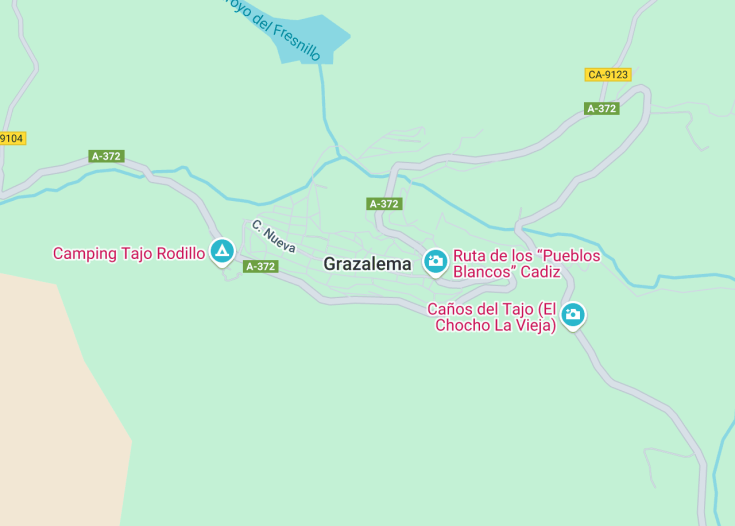Nestled within the majestic Sierra de Grazalema Natural Park, Grazalema in Spain epitomizes rustic charm and untouched natural beauty. This village is renowned for receiving the highest rainfall in Spain, creating a lush, vibrant landscape that contrasts sharply with the typical arid surroundings. Historical architecture, quaint cobblestone streets, and the warmth of local traditions offer a delightful escape. Grazalema also serves as an ideal base for hiking enthusiasts and nature lovers wishing to explore its diverse flora and fauna.
While visiting Grazalema, ensure you have suitable rain gear. Despite the sunny disposition of Spain, Grazalema’s unique climate can surprise unsuspecting visitors.
Consider timing your visit during the ‘Fiesta de la Virgen del Carmen’ in July for a unique cultural experience with traditional music, dance, and local festivities.
Top things to do & see in Grazalema
Select the following sights and activities to discover best tickets and tours available in Grazalema.
Grazalema: A Gem in Andalusia
| Country | Spain |
| Time in Grazalema | GMT+1 |
| Language spoken | Spanish |
| Population | 2,205 (source: latest municipal census) |
| Currency | Euro (€, EUR) |
| Airports |
|
Grazalema is a picturesque village located in the heart of the Sierra de Grazalema Natural Park in Spain. Known for its stunning natural landscapes, white-washed buildings, and rich cultural heritage, Grazalema is a popular destination for tourists seeking a blend of nature and tradition. The village’s history dates back to the Roman era, as evidenced by the remains found in the area. Today, Grazalema is famous for its woolen products and local crafts, reflecting its long-standing traditions in sheep farming and textile production.
Where is Grazalema?
Grazalema is nestled in the mountainous region of Andalusia in southern Spain, offering breathtaking views and a tranquil escape from the bustling city life.
Distances:
| Route | Distance by car | Time by car |
|---|---|---|
| Seville to Grazalema | 80 miles / 129 km | 1 hour 30 minutes |
| Málaga to Grazalema | 85 miles / 137 km | 1 hour 40 minutes |
What is Grazalema famous for?
Grazalema is renowned for its beautiful landscapes within the Sierra de Grazalema Natural Park, known for its unique microclimate and abundant greenery, making it a haven for hikers and nature lovers.
History
Prehistoric to Roman Era
The region surrounding modern-day Grazalema has been settled since prehistoric times. Archaeological findings, such as cave paintings and pottery, suggest early human presence during the Neolithic period. The strategic location of Grazalema, nestled within the Sierra de Grazalema, made it an ideal settlement for ancient Iberian tribes. The area came under Roman control around the 2nd century BC. The Romans took advantage of the region’s natural resources, including its ample water supply and strategic position along important trade routes.
Medieval Period (8th to 15th Century)
With the arrival of the Moors in the 8th century, Grazalema saw significant transformations. The Moors built fortifications to protect their new settlements and introduced advanced agricultural techniques, which led to an era of prosperity. Grazalema became known for its wool and textiles. In the 13th century, during the Reconquista, Christian forces gradually retook the territory. The reestablishment of Christian rule in the region brought new architectural styles and societal changes.
Modern Era (16th Century to Present)
Following the Reconquista, Grazalema developed a robust textile industry, which reached its zenith during the 18th and 19th centuries. The village’s high-quality woolen products were in demand both in Spain and abroad. However, the industrial revolution and competition from larger industrial cities led to a decline in traditional craftsmanship. In recent decades, Grazalema has embraced tourism, highlighting its rich history, beautiful natural surroundings, and traditional crafts as major attractions.
Visit Grazalema
What to see and do in Grazalema
Exploring Grazalema offers a blend of natural beauty, historical architecture, and vibrant local culture. Key attractions include:
- The Sierra de Grazalema Natural Park, ideal for hiking and observing diverse flora and fauna.
- The charming old town, with its narrow cobblestone streets and traditional white-washed houses.
- The Church of San José, which showcases exquisite religious art and architecture.
- Local artisan shops featuring hand-crafted textiles and unique souvenirs.
Adventurers and culture enthusiasts will find plenty to enjoy in this picturesque locale.
Festivals and Events in Grazalema
Grazalema is vibrant with cultural festivities, notably:
- The “Fiesta de San José,” which takes place in March, celebrating the town’s patron saint with processions and traditional music.
- The “Feria de Grazalema,” occurring in July, offers a week of festivities, including dances, crafts, and bullfights.
These events provide a fantastic opportunity to experience local traditions and hospitality.
Best time to visit Grazalema
The ideal time to visit Grazalema is during spring or autumn. These seasons offer mild temperatures, making it perfect for outdoor activities like hiking in the Sierra de Grazalema. Additionally, the natural landscapes are particularly stunning as they bloom in spring and turn golden in autumn.
Is Grazalema worth visiting?
Grazalema is undoubtedly worth visiting for anyone interested in the seamless blend of natural beauty and rich historical tapestry. The town offers a rare glimpse into traditional Spanish life, while the surrounding natural park provides endless possibilities for outdoor pursuits. The welcoming atmosphere and well-preserved cultural heritage make it a captivating destination for both relaxation and exploration.









